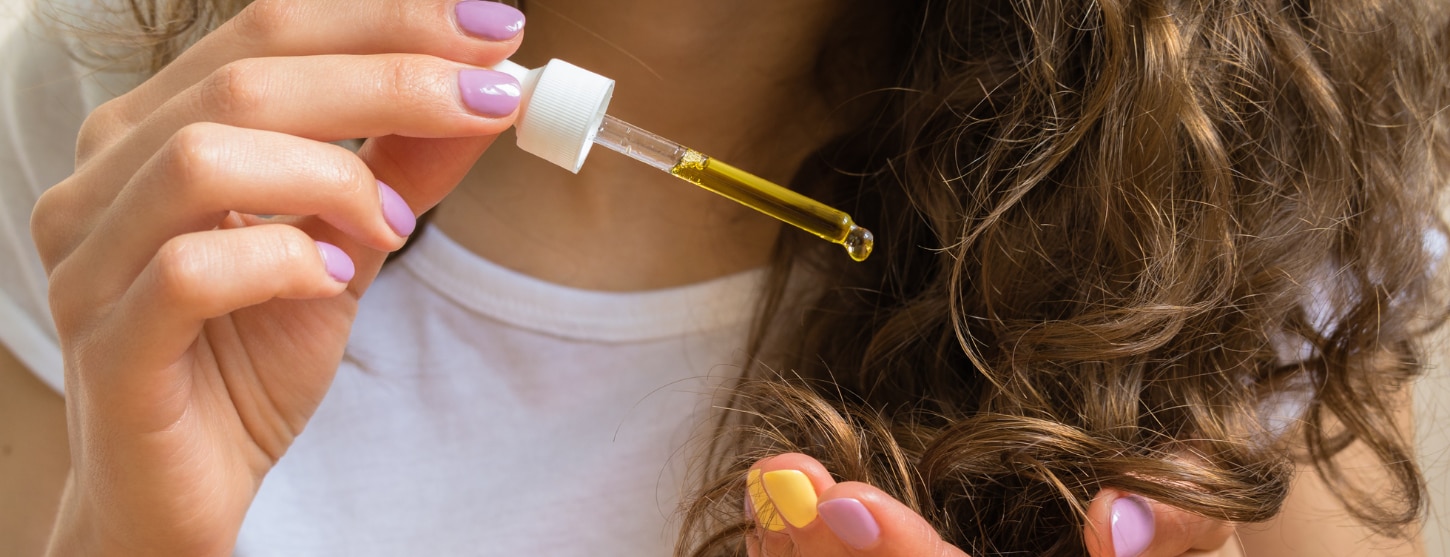15% off €30 OR 20% off €40
Code:OFFER
What is squalane? 12 top squalane oil benefits

What is squalane? Why is everybody raving about it & what are the advantages of using it? Take a look at the 12 top squalane benefits in this article.
So, what do you know about squalane, other than it’s got a bit of an unusual sounding name?
We’re guessing you may have heard and read bits and bobs about it, but would love to find more about why it’s meant to be so good for skin, right?
We hear you, which is why we’ve dedicated this article to lifting the lid on the mighty moisturising product that is squalane.
Keep reading for details, including how and why it works, what it’s made from and how you use it.
What is squalane?
Pronounced ‘skwey-leen’, squalane is a hydrogenated version of squalene, which is a compound that’s naturally produced by our sebaceous glands.
Squalane is reportedly more shelf-stable than squalene, making it easier to use in skincare products.1
Our sebaceous glands are responsible for producing sebum (oil), which is essentially a combination of wax esters, triglycerides and squalene.
These three things collectively form a protective coating on the outer layer of our skin.
Not only does it help moisturise our skin, but it acts as natural barrier.
Interestingly, squalene is naturally found in our blood too, as well as in olives, rice bran and wheatgerm.
It essentially works its magic by mimicking the sebum that’s already present in our skin.
Squalane or squalene?
Before we delve a bit further into the world of squalane, let’s just take a minute to clear something up that’s most probably crossed your mind. ‘Is squalane and squalene the same thing, only spelt differently?’
While they are both natural substances. But they aren’t the same thing.
Squalene is…
The natural version of squalane. It’s produced by our body as a lipid however, as we get older our squalene levels decline over time, pretty much like our collagen levels do.
Squalene is estimated to make up around 10 to 12 % of the skin’s natural oil, which is why it’s so important for our skin.2
Squalane is…
The skincare product equivalent of squalene, which is actually too unstable to be bottled and turned into a beauty product because it turn rancid really quickly the moment it’s exposed to oxygen.
Squalane is created by hydrogenating squalene. This essentially involves turning squalene from an unsaturated oil into a saturated oil.
Summary:
- Squalane is a hydrogenated version of squalene, a compound that’s naturally produced by our sebaceous glands
- Squalane and squalene (the natural version of squalane) aren’t the same thing
- Squalene makes up an estimated 10 to 12 % of the skin’s natural oil
What is squalane made of?
Squalane can be found in high abundance within shark livers and it’s this connection that actually gives it its name (this is mainly due to the fact Squalus is a genus of shark).3
However, in an effort to source squalane that isn't from shark liver, many beauty companies are obtaining their sources from natural compounds, such as plants.4
What is olive squalane?
You know how we’ve just mentioned up above that squalane is increasingly being sourced from natural resources?
Well, aside from plants, squalane can be found in abundance in olive oil. It’s also sourced from rice bran, wheat germ and sugar cane.
So, olive squalane is squalane that’s been sourced from olive oil.5
Summary:
- Squalane can be, and is, sourced from shark liver
- Some versions of squalane are made from compounds, such as plants
- Olive squalane is squalane that’s been sourced from olive oil
Is squalane better than hyaluronic acid?
Now that’s a good question because both are super ingredients that are renowned for their moisturising abilities. Hyaluronic acid is known within the skincare world for its unique ability to hold up to a thousand times its weight in water molecules.6
While HA may be a natural component of skin, our levels tend to drop as we age, which can lead to a reduction in our natural moisture levels.
And that’s where synthetic versions of HA come in, which are applied topically and designed to draw water into the skin, leading to a plumper and fresher-looking complexion.
Like, squalane, it can also be applied to sensitive, as well as mature skin, with the main benefits being improved skin elasticity, skin repair, and helps to combat free radicals.
Unlike HA, which boosts skin’s water content, squalene is a mega-hydrator that acts as a barrier to keep moisture locked in so skin stays soft, supple and plump for longer.
However, over time natural squalene levels start to drop, just like HA does. But it can be replenished with squalane that’s been harvested from plant-based sources, such as rice bran and olives.
Whether squalane is more effective than HA and vice versa comes down to personal choice. Both deliver supreme moisturising and replenishing results.
You can even, if you want to, apply both of them to your skin. Use hyaluronic acid to hydrate and then apply some squalane to seal in moisture and maximise moisture retention.
Is squalane suitable for everyone?
What’s not to love about squalane?! It’s essentially a dose of the skin’s natural moisturiser that’s been bottled up for you to use to help maintain your squalene levels, as well as generally quench your skin.
And because it’s a natural moisturiser, you can use it twice a day in an oil, serum or moisturiser form. You can also apply it directly to your face, after water-based treatments and before moisturiser.
And the even better news is, squalane is an adaptogen so adapts to/gets on with most skin types and delivers benefits to most skin types too. This includes extremely sensitive skin and blemish-prone skin.
Interestingly, squalene in its purest form can oxidise and clog pores, but squalane doesn’t do this because it’s a super lightweight oil.7
Summary:
- Squalane and hyaluronic acid are renowned for their moisturising properties
- Hyaluronic acid is known for its unique ability to hold up to a thousand times its weight in water molecules
- Squalane is a mega-hydrator that keeps moisture locked in
What’s the best way to use squalane oil?
The great thing about squalane, other than it’s superb moisturising qualities, is that it can be used on more than just your face.
You can also apply it to your nails and hair and reap the benefits of doing so too.8
If you would like to start using it on your face; do a patch test, just to check how your skin responds to it. If it’s ok, aim to apply squalane twice a day, morning and night.
How to use squalane on your skin:
- Cleanse your skin and apply any serums first.
- Massage in some drops of squalane oil.
- Moisturise your skin with a moisturiser. (In the morning – use a moisturiser with an SPF of 30 to 60 already in it. Alternatively, you can put on your moisturiser and then apply a separate sunscreen afterwards).
How to use squalane on your hair:
Regularly applying squalane to your scalp and hair can make them feel softer and look shinier.
- Apply several drops of squalane oil to your scalp.
- Massage it into your scalp.
- Comb the squalane through to the ends of your hair. 4 Rinse it out with warm water.
What are the benefits of using squalane?
One of the biggest benefits, which we alluded to at the start of this post, is that squalane can help replenish the skin’s moisture levels. But that’s not where the benefits the end.
You see, squalane can be used on more than just your skin, it can be used on your hair, as it mimics the hair’s natural sebum too. But that’s not all, you can also use it on your nails and cuticles and to moisturise your lips and the area underneath your eyes. Let’s take a look at some of the main benefits of using squalane oils, creams and serums:
Squalane benefits for skin
- Hydrates skin, which can help promote overall skin healthiness, thanks to its emollient properties
- Cleanses your skin9
- Helps combat free radicals
- Absorbs really easily into skin – it’s so lightweight, it absorbs into the deepest parts of skin quickly and easily10
- Prevents moisture from escaping from skin
- It works in harmony with our skin – because it’s a form of a substance our bodies naturally produce
Squalane benefits for hair
- Helps increase shine
- Boosts moisture levels
- Helps prevents breakage
- Helps protect hair from sun and heat
- Replenishes natural hair oils
- Leaves hair feeling softer
Summary:
- You can use squalane on your face, hair and nails
- It’s linked with a wide range of benefits, which include hydrating skin deep down because it’s so lightweight
- It can lock in moisture and protect skin against free radical damage
A final few words about squalane
Squalane is one of those skincare products that everybody should, and can, have on their bathroom shelf.
It’s the next big thing when it comes to not just moisturising skin, but providing us with a skincare saviour that’s plant-based and is as natural a moisturiser as you can get right now.
The beauty of it is, is that it gets on well with all skin types and is nice and lightweight, so doesn’t feel heavy on your skin or leave you with greasy fingers and hands.
If there is such thing as a skincare fairy wand, it was most certainly waved when squalane came on to the scene.
As with all skincare products, start small and work your way up to letting your skin get used to it, and best of luck with adding squalane to your skincare routine!



